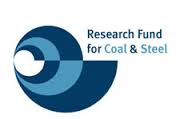 The Research Fund for Coal and Steel (RFCS) research and innovation program conducted an evaluation of its first ten years of operation and the conclusions are released in a report pub-lished today. RFCS supports Research & Innovation (R&I) in the coal and steel sectors. It follows up on the R&D part of the European Community Steel & Coal (ECSC) program, which lasted for 50 years until 2004 and was at the root of the present European Union.
The Research Fund for Coal and Steel (RFCS) research and innovation program conducted an evaluation of its first ten years of operation and the conclusions are released in a report pub-lished today. RFCS supports Research & Innovation (R&I) in the coal and steel sectors. It follows up on the R&D part of the European Community Steel & Coal (ECSC) program, which lasted for 50 years until 2004 and was at the root of the present European Union.
The European coal and steel dedicated programs have been an original feature of European political culture, with no equivalent in the world. It was timely to evaluate the RFCS program after 10 years of existence and following several evaluations of the ECSC programs conduct-ed over the years, which had shown positive benefits for the sector, its value chain and society as a whole.
The evaluation was conducted by a group of experts, among which ESTEP’s Secretary Gen-eral.
The RFCS program brought benefits in terms of developing new knowledge, of bringing fi-nancial returns on the budgets invested in the research by beneficiaries and in the EU, of de-veloping new processes, new products and new solutions – thus creating new market share – and of positively impacting the environment and health and safety at work.
In quantitative terms, modeled from the analysis of 23 projects where detailed information could be collected in a satisfactory manner, the study showed that an overall potential benefit of 700 M€/y was generated by the 55 M€/y program. Overall, 1€ invested by the Commis-sion in funding the program generated 12.5 € of benefits for the coal & steel sectors.
This report reinforces the intuitive and positive vision that ESTEP and the Steel sector have had of the RFCS program. RFCS should thus be maintained in the future in the way that it is run today. Moreover, as procedures are in place for a continuous improvement in operating the program, adjustments to a changing world should be easily incorporated in the future.
In parallel, ESTEP has been working with the EU Commission in the construction of the Horizon 2020 program, playing an important part in transversal initiatives, like PPPs (Factory of the Future, Energy Efficient Buildings, European Green Vehicles Initiative, Sustainable Process Industry through Resource and Energy efficiency) and EIPS (Water and Raw Materi-als). It also collaborates directly with other European Technology Platforms (ETPs). In this wider context, ESTEP and its community will also be active in the Horizon 2020 program, when it comes on stream.
Background
ESTEP, the European Steel Technology Platform, is one of the first ETPs founded in 2004. It was recently reconfirmed as a “Europe 2020 ETP” by the Commission. Members include most of the Steel Producers in the EU, but also major representatives of the steel value chain, research centers, like the RIES (Research Initiative for European Steel), and universities.
ESTEP carries out foresight studies, producing roadmaps that project its vision of the role of steel in the world to come and of the essential role that R&I will play in bringing it about. It works very closely with EU.
